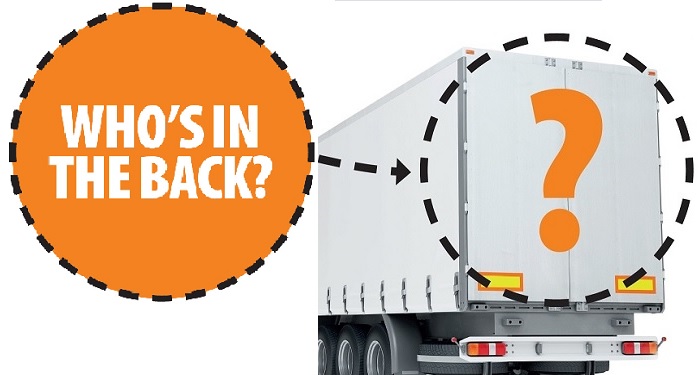John Heaton of Backhouse Jones Solicitors discusses some of the issues surrounding clandestine entrants and the current guidance in respect of the same.

The media at present is full of the immigration stories just as locations in Europe from Kos to Calais are full of would be migrants. By the time lorry drivers and our haulage industry have contact with them, the law calls the same people “would be clandestine entrants”.
But lorry drivers also have rights. They have the right to do their job for their hauliers and on behalf of the customers without interference and without physical threats. Clandestine entrants, of course, have rights as well. Many will be victims of persecution though some will be economic migrants only. Some of them will be criminals. All are desperate to gain admittance to the UK. The classic difficulty that lorry drivers in the UK find is that having arrived in the UK and driving on UK roads they then hear something from deep inside their trailer which suggests that they have clandestine entrants on board.
What to do?
Should the driver deliver his vehicle to the Police or UK Border Agency, voice his suspicions and let the authorities “open the box”?
The driver’s involvement in bringing the legal immigrants then comes under scrutiny. If he delivers them up to the authorities, that might be strong evidence that he is not knowingly part of an illegal scheme.
The driver and haulier will face heavy civil penalties unless they can prove they have the statutory defence. They will have to prove the defence against Civil Penalties under s34 of the Immigration and Asylum Act 1999 in order to stand a chance of avoiding the penalty. If they cannot, they face penalties of up to £2,000.00 each per stowaway.
The stakes are high. The Civil Penalties may be the least of the driver’s worries. He will be concerned that having brought clandestine entrants into the UK that the Police/UK Border Force think he is criminally complicit with them and perhaps being paid by them. It is perhaps understandable that a driver faced with the suspicion he has clandestine entrants on board is reluctant to go to the authorities. UK Border Force have a tough job and are under especially close scrutiny at present. The driver will fear that they are suspicious of him and at the very least unsympathetic to the dilemma he has found himself in. With these worries and concerns, he may feel tempted to find a quiet location at which to open the doors and let his passengers walk away on the basis this is the option least likely to cause him trouble.
The Code of Practice under the Act (“the Code”) addresses a situation where the driver forms a suspicion that he has clandestines on board prior to embarkation to the UK. Unfortunately, the Code is less explicit when it comes to situations where the driver suspects he has clandestines aboard and has already arrived in the UK. Whilst there is guidance on the government website, a large part of this guidance is to remain in the cab of the vehicle and alert the authorities, an option already identified as being unattractive to the driver in this situation.
The driver and the haulier have to prove three things if they are to avoid a civil penalty under The Immigration and Asylum Act 1999 (“the Act”). This criteria is outlined in Law at Section 34(3) of the Act, however the Code sets out good practice which assists in proving the defence.
1. No knowledge, and no reasonable grounds to suspect clandestines are on board. The haulier will generally not have been present personally when the vehicle is loaded or on the journey and will have no problems proving this element. The driver will often have been present when the vehicle is loaded and will of course have been driving with the stowaways on board prior to them being found. Often the driver can do no more than deny actual knowledge and point to an absence of physical clues of a break in which might have put him on notice. He could also point to the system of checks and his operation of the systems (see below).
2. An effective system to prevent the carriage of clandestines. Both driver and haulier will have to demonstrate the operation of a proper system for ensuring the loading and security of the vehicle without stowaways on board. They will have to demonstrate an effective system of locks and seals and inspection procedures for the vehicle prior to sealing up and regular interim checks by the driver on route. Of course, each time he stops he potentially gives the Clandestine entrants the opportunity to sneak on board. All of this must be properly documented and ideally (according to the Code) have the fact that he is carrying out the checks witnessed by a third party. The haulier must train the driver and demonstrate when this was done and how it was kept up to date. The driver’s knowledge should be audited.
3. The driver must operate the system properly and be able to demonstrate he did so. The driver can expect to be interviewed if clandestines are found and will have to demonstrate in interview that he knew nothing of his passengers and that he did carry out appropriate checks and document them.
A further problem for the driver is that he cannot imprison the people once he is aware that they are in his vehicle. In the end it is the driver’s decision as to what he is going to do. The driver has a balance a moral imperative to go to the authorities against a moral and legal duty not to imprison his passengers once he knows they are aboard and wish to get out. Once he knows they are there the driver may well have some duty to ensure that they are not in danger. The sensible advice to the driver would be to go to the authorities. The driver, of course, finds himself in an impossible dilemma for the reasons already stated.
The Code ignores the dilemma. It is desirable that the Code gives specific advice as to what a driver should do in these circumstances. The Code, by ignoring the dilemma, does not even acknowledge that the situation exists. It would be possible for the Code to acknowledge the dilemma and for instance to indicate that the Civil Penalties, if they applied because a driver could not prove the defence, would be capped at a lower level in cases where a driver went to the authorities. This of course would have to be in a situation where the authorities were satisfied that the driver was not complicit in the importation of his passengers in the first place.
The absence of guidance from the government for a driver in this dilemma deserves addressing – The Code, by ignoring the dilemma, does not acknowledge the situation exists. Of course, at the time when the driver has to make a decision having formed the suspicion that he has clandestines on board, he will be without the benefit of legal advice.
In the meantime, the number of migrants in the Pas de Calais increases and the politicians wrestle with the situation across Europe.

John can be contacted on 01254 828 300, e-mail john.heaton@backhouses.co.uk.
Bio
John Heaton is a solicitor at Backhouse Jones who qualified in 1981. John specialises in road transport law (both prosecuting and defending), Magistrates Court and Crown Court advocacy, regulatory work before the Traffic Commissioners.
Photo: John Heaton